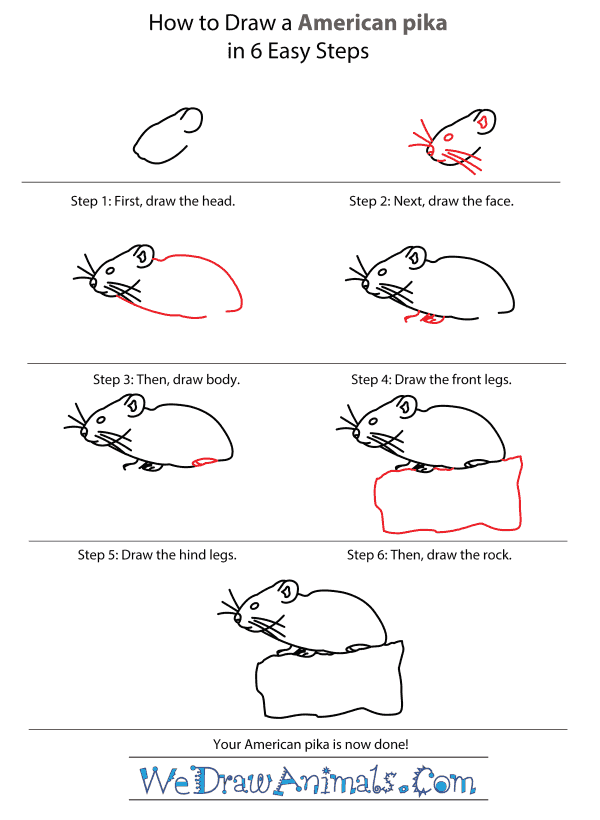In this quick tutorial you'll learn how to draw an American Pika in 6 easy steps - great for kids and novice artists.
The images above represent how your finished drawing is going to look and the steps involved.
Below are the individual steps - you can click on each one for a High Resolution printable PDF version.
At the bottom you can read some interesting facts about the American Pika.
Make sure you also check out any of the hundreds of drawing tutorials grouped by category.
How to Draw an American Pika - Step-by-Step Tutorial
Step 1: Let's start our little pika - draw a long rounded shape with a round line for the ear.
Step 2: Draw a square shape inside the ear, a circle for the eye and nose, six lines for the whiskers and another line for the mouth.
Step 3: Draw a rounded line for the body. Leave a gap!
Step 4: Draw a few lines at the front bottom of the pika's body for the legs. Leave a gap for the rock.
Step 5: Simply draw two oval shapes for the hind legs.
Step 6: Finally, draw a rugged rectangle for the pika to stand on - The American pika is the smaller relative of the rabbit and hare!
Interesting Facts about the American Pika
The American pika (Ochotona princeps) is a small mammal that lives in the mountains of Western America. They are a small relative of rabbits and hares, and eats grasses, leaves, thistles, and other green plants.
Did you know?
- While they sometimes eat the food they find right away, the pika also collects food in small piles, called “haying.” This food is used during the winter, since pikas do not hibernate.
- The pika seems to be able to understand the importance of its food, harvesting certain plants at certain times, when the plant will offer the most nutritional resources.
- The American pika can grow up to eight inches long and usually weigh about six ounces.
- Pikas cannot tolerate high temperatures, and live in mountain areas to stay cool. Due to global warming, these usually cool areas are warming up and endangering the pika population.
- Pikas can live to be 6 to 7 years old, but their average lifespan is three to four years.
Lesson plan note: The pika is quickly becoming the poster animal for the effects of global warming, and runs the risk of being the first animal to go instinct due to global weather changes. Discuss how changes of temperature threaten the pika and what can be done to save it.







